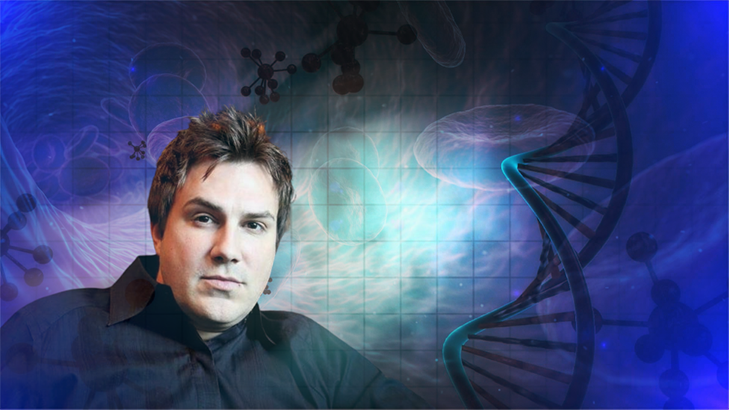
Did you know that this year the average lifespan of US citizens has dropped to 76.1 years from 77? All that is because of increasing pollution and unhealthy attitude.
However, Jason Hope came forward with a therapy that might be the ideal solution. According to him, regenerative stem cell therapy can impact several life-decreasing factors, and he is not wrong!
Research on stem cell therapy has produced some amazing results in the last decade. Over the years, scientists have been studying the efficacy of stem cells in prolonging human lives.
The therapy’s befitting exposure can indirectly increase human longevity by removing the damage done by disease-causing agents.
In this article, we’ll see what Hope has to say about stem cell therapy and its accuracy.
Jason Hope’s Ideology Of Prolonging Human Life Through Stem Cell Therapy
Hope has been calling stem cell therapy the future-changing methodology for the past few years. Indeed, it is!
Before jumping in to see how it can change our lives entirely, let’s get its general overview. As the name suggests, it is a therapeutic medicinal strategy that involves the proliferation of stem cells.
These cells are undifferentiated without any specific purpose. They can transform into distinct cells to perform particular functions.
Think of it as a regenerative method to create specific cells. The perfect method of the body to develop its graft tissues is not yet known. However, scientists think this technology can be revolutionizing. In fact, some industries are running on this therapeutic practice.
Regenerative stem cell therapy allowed scientists to generate skin for burned victims. Moreover, it has a major assisting role in the anti-aging field.
Let’s see how Jason Hope perceives it as a human lifespan-increasing strategy.
Regenerative Stem Cell Therapy And Organ Replacement
Scientists did some research in the past decade and concluded that both these terms have a direct connection.
Regenerative stem cell therapy can become the main strategy for replacing an organ entirely. Researchers have been creating new organs for specific individuals using their stem cells from the bone marrow.
Therefore, Jason Hope said that the therapeutic practice can help repair and replace any weak or damaged organ without complications.
With the above fact in place, we can say that stem cell therapy can help the body to work at its optimal condition. As a result, enhancing human longevity.
Heart Damage Repair Through Stem Cell Therapy
CDC says that heart failure is the leading cause of death in the USA. Atherosclerosis is the main cause of cardiovascular diseases. Furthermore, the coronary artery is the one that gets thickened and narrowed that causes all the fuss.
This condition can cause severe damage to the heart walls and arteries. As per Jason Hope, stem cell therapy stops any additional damage to the heart tissues. For that reason, it helps improve the body’s life expectancy and healing mechanism.
This therapy has already been proven to be very effective. For example, one study published in 2010 showed that patients who received the therapy had reduced mortality rates compared to those who didn’t.
Diverse Approaches to Regenerative Stem Cell Therapy
Jason Hope states that stem cell therapy can impact the human body in three different exposing conditions. Every one of these is essentially important in expanding the lifespan.
Rejuvenation is the first one. It is simply the name of boosting the body’s healing power. The methodology is effective in preventing any further damage to affected organs.
The cells used can be of two types. Scientists name them multipotent if they can transform into multiple specific cells. However, a single-directional transformation cell is pluripotent.
The process involves extracting adult stem cells from the body and turning them into induced pluripotent stem (iPS) cells. These cells are similar to embryonic stem cells. Next, these iPS cells are reprogrammed back into a state where researchers use them to produce new tissue in the patient’s body.
Another approach is through replacement. This exposure is normally for replacing tissues or organs. The process isn’t much different. The only difference present is the induction of specific donor cells.
These donor cells depend on whether the end product is compatible with aged or damaged cells. Finally, the last one is a regenerative process that makes it accessible for the body to function ideally.
Anti-aging and Its Connection With Stem Cell Therapy
In the words of Jason Hope, anti-aging is ultimately the top application of stem cell therapy. Surgical procedures like Botox or facelifts often come to mind when we think of anti-aging treatments.
However, these are just the tip of the iceberg when we compare them with what stem cell therapy can do. Stem cell therapy allows you to replace your aged cells of skin, hair, or nails; for your joints; or for your eyesight or hearing (to name just a few).
You can assume the importance of the therapeutic practice by its increasing use in the social environment. Nowadays, athletes inject it directly into the muscles to increase physical performance and improve the body’s natural power.
The process involves removing fat tissue from the person’s abdomen, then isolating stem cells from that. Researchers grow these into a small number of new cells and inject them into a patient’s body to replace damaged or missing stem cells.
Scientists ensured that it reduces the risk of heart disease, diabetes, and cancer. For that reason, we can say it can decrease the aging rate, improve the immune system and enhance lifespan.
Stem Cell Therapy and Chaperone-Mediated Autophagy Association
Chaperone-mediated autophagy (CMA) is an adaptive response of cells to stress. It involves using a chaperone protein called ATG8/LC3 to degrade damaged organelles.
Moreover, it includes lysosomes’ selective degradation of proteins, lipids, and organelles. The major function of CMA is to degrade the damaged tissues and cells to prevent any additional damage.
According to Jason Hope, this process directly links stem cell therapy to life expectancy through the healing enhancement effect. However, it has not been studied yet in the context of age-related macular degeneration (AMD).
Stem cell therapy and chaperone-mediated autophagy (CMA) are two different befitting body behaviors. Both can help extend human longevity. One can eliminate the damaged cells, and the other can generate new ones to replace them.
Moreover, both have become two of the most promising damage reduction strategies for diseases of the central nervous system and the heart.
One form of stem cell therapy involves using adult stem cells (ASCs) derived from bone marrow or umbilical cord blood.
Scientists are using ASCs for decades to treat various forms of cancers, such as bladder cancer. However, there are limitations to using ASCs for treatment. The reason is that these types do not require long-term maintenance therapies.
The two processes collectively treat disorders such as epilepsy and Parkinson’s disease, but only if they are delivered within hours of each other.
Besides, remember that regenerative stem cell therapy is not a treatment for every disease. It is ideally suitable to enhance the healing process and restrain damaging factors.
Key Takeaways
Long story short, regenerative stem cell therapy can be a potential human lifespan expander. In addition, the method is suitable as a helping hand for the body’s natural immune process. Even though the perfect strategy for the purpose is still in progress, it is still revolutionizing human health.


